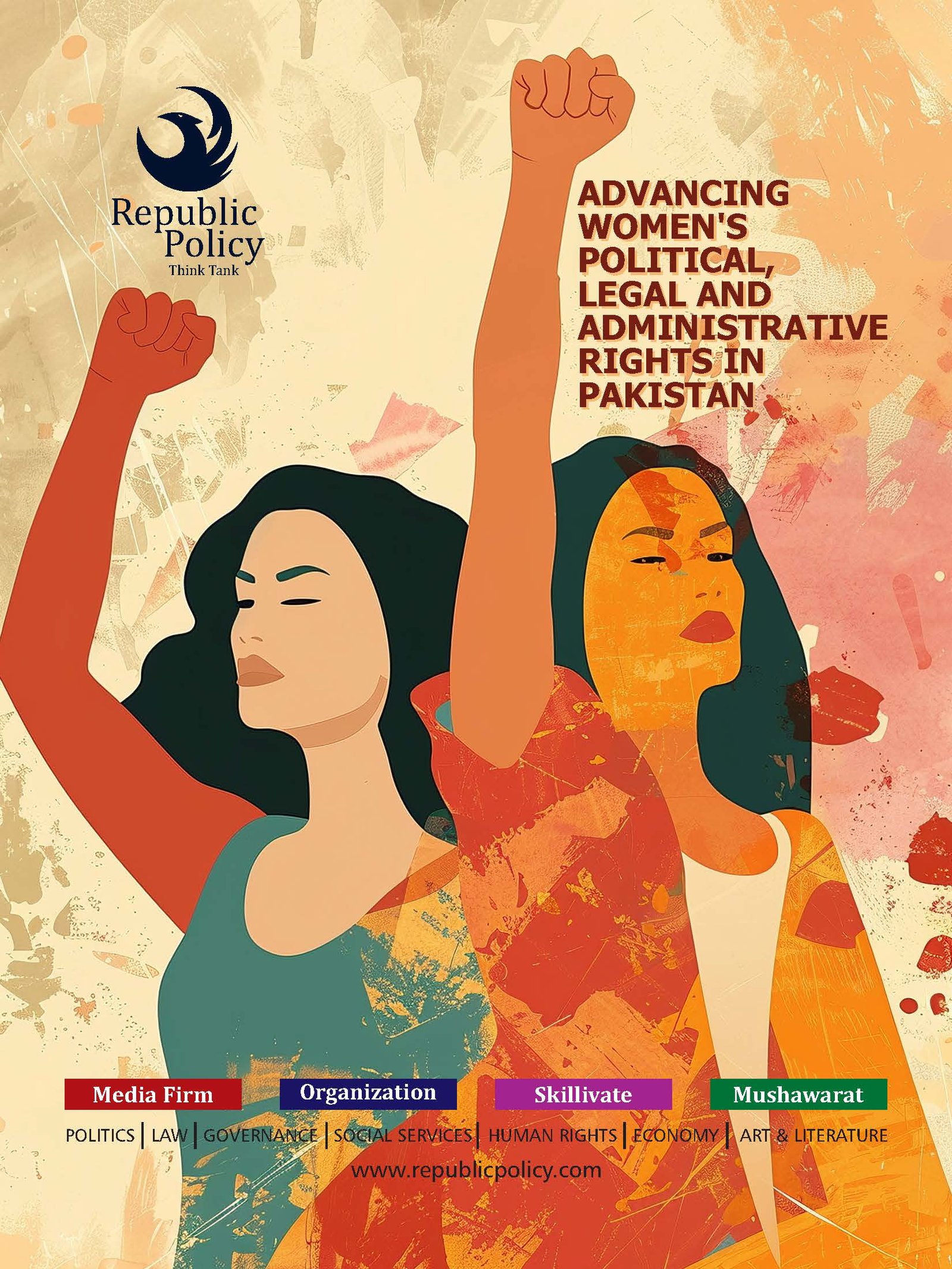Dr Shabana Safdar Khan
In recent weeks, Pakistan’s legal system has delivered some significant rulings that offer a glimmer of hope for gender equality in the country. These rulings, which address key issues affecting women, deserve more attention and discussion, especially in mainstream media. They highlight a shift in legal perspectives that could potentially reshape societal attitudes and empower women to assert their rights more confidently.
One of the most noteworthy decisions came last week from a two-judge bench of the Supreme Court, which made a powerful statement regarding women’s legal rights and autonomy. The court ruled that a woman’s rights are not contingent upon her marital status, marking an important step forward in challenging patriarchal assumptions that often restrict women’s freedoms. The bench clearly stated that a woman’s legal rights, personhood, and autonomy are not nullified by marriage and that the presumption of a married woman’s financial dependence on her husband is both legally incorrect and unsubstantiated by Islamic law. This assertion is crucial in dismantling longstanding cultural norms that confine women to traditional roles of dependence and subjugation.
The court also made an important observation about the exclusion of married daughters from benefiting from job quotas reserved for compassionate causes, emphasizing that this practice reveals a deeper, systemic flaw rooted in patriarchal assumptions about women’s identities and their roles in the legal and economic systems. By challenging this practice, the Supreme Court has highlighted an issue that is deeply embedded in the societal structures and which perpetuates inequality under the guise of tradition.
While these judicial decisions are undeniably significant, the question remains: Has Pakistani society fully received this message about women’s rights? The answer is uncertain, as the deep-rooted patriarchal attitudes that shape societal norms often go unchallenged. Patriarchal values are so ingrained in the cultural psyche that they influence people’s judgments about what is right or wrong without them even realizing it. These attitudes not only undermine women’s rights but also make it difficult for them to recognize when their rights are being violated. Therefore, rulings like the one issued by the Supreme Court last week, which assert that women’s rights are inalienable regardless of marital status, need to be amplified in the media. This would help spread awareness of these critical legal advancements and allow more women to become aware of their rights.
The Federal Shariat Court (FSC) also issued an important ruling recently that deserves mention. In this case, the FSC condemned customs that deprive women of their rightful inheritance, calling such practices “unlawful” and urging provincial authorities to take criminal action against those who continue to enforce these discriminatory practices. This ruling reinforces the notion that women’s rights to inheritance are fundamental and cannot be overridden by cultural practices or societal norms. By asserting that these actions are “morally obligatory” to address, the FSC has placed the onus on the state to ensure that women’s rights to inheritance are upheld and protected. This ruling, too, has the potential to spark much-needed change, but its impact will be limited unless society at large recognizes and acts upon it.
Pl subscribe to the YouTube channel of republicpolicy.com for quality podcasts:
While these rulings represent a clear and positive shift in the legal framework, they alone cannot change societal attitudes and behaviors. The legal system can only do so much in the fight for gender equality. It is essential for these rulings to be widely publicized and discussed in the media, especially in a country where the majority of women may not be fully aware of the legal protections available to them. By ensuring that such decisions are given the attention they deserve, we can begin to break the cycle of ignorance and apathy surrounding women’s rights issues.
Moreover, these court decisions should serve as a catalyst for conversations within families, communities, and workplaces about the rights of women and the structural changes needed to create a more equitable society. If these discussions take place, they can help shift the collective mindset, making it less acceptable for women to be treated unfairly or unequally. Women, too, need to be encouraged to understand and assert their rights, and having these rulings prominently featured in the media could go a long way in empowering them to take legal action if necessary.
It is important to recognize that, while the judiciary plays a vital role in ensuring that laws are followed and rights are protected, societal change requires more than just legal rulings. The public needs to engage with these rulings critically and take collective responsibility for ensuring that the legal protections they provide are enforced. The responsibility does not solely lie with the courts or the state; it is a shared responsibility that requires active participation from all segments of society, including the media, educators, community leaders, and even religious institutions.
At the same time, it is essential that legal education and awareness programs be expanded, particularly in rural and underserved areas, where women are often unaware of their rights or unable to seek legal recourse. While urban areas may have better access to legal resources and information, rural women often face cultural and geographical barriers that prevent them from seeking justice. By reaching out to these communities and educating them about their legal rights, we can help bridge the gap between legal theory and practice.
Furthermore, the media can play an instrumental role in this process. It can do so by covering rulings like those issued by the Supreme Court and the FSC in a way that connects the legal context to everyday life. In doing so, the media can help raise awareness of women’s rights and challenge the deeply entrenched patriarchal norms that continue to permeate society. By giving more airtime to these rulings and explaining their implications in simple terms, the media can help demystify legal processes and make it easier for women to understand their rights.
In conclusion, the recent rulings by Pakistan’s legal system represent a much-needed affirmation of gender equality, challenging the patriarchal assumptions that continue to shape societal norms. While these rulings are significant, they cannot achieve their full potential unless they are amplified through public discourse and media coverage. The public needs to engage with these rulings, recognize their importance, and take active steps to ensure that women’s rights are respected and protected. Only through a collective effort will we be able to create a society where women’s autonomy and legal rights are not subject to patriarchal norms and outdated customs. As we look ahead, let us hope that the legal system’s progressive rulings serve as a foundation for a more equal and just society for all.

















